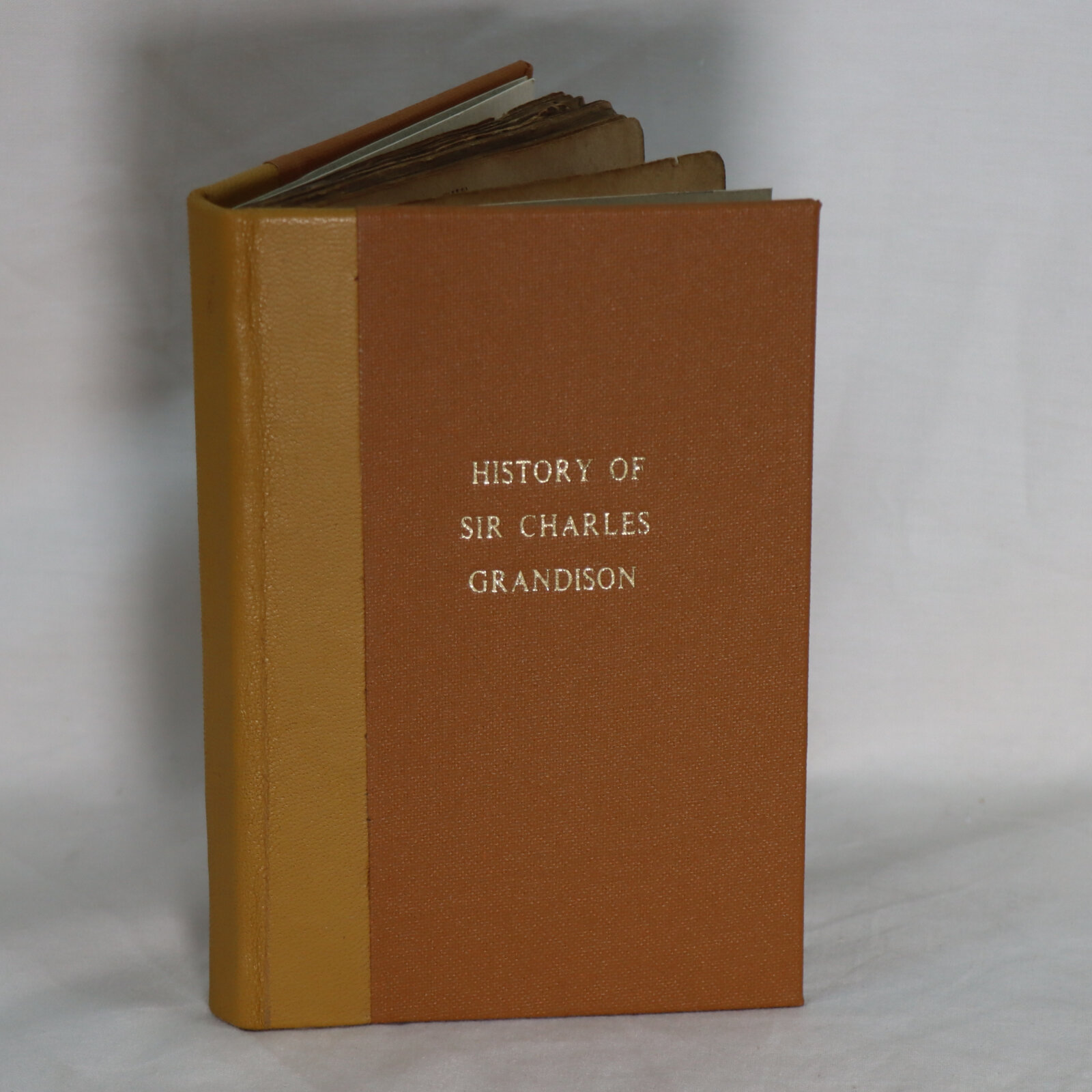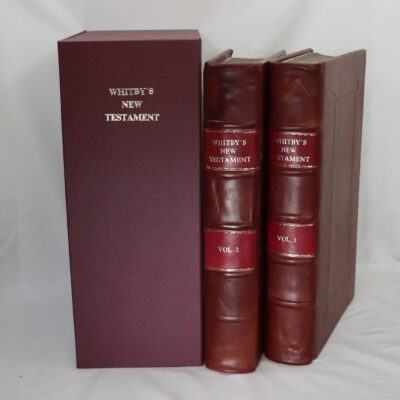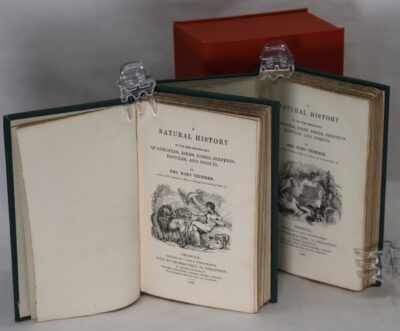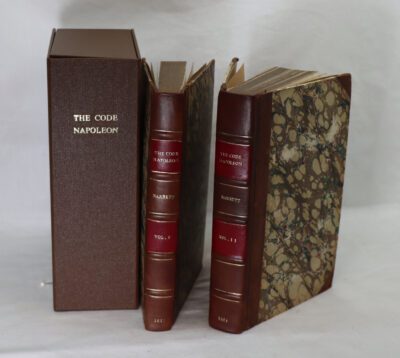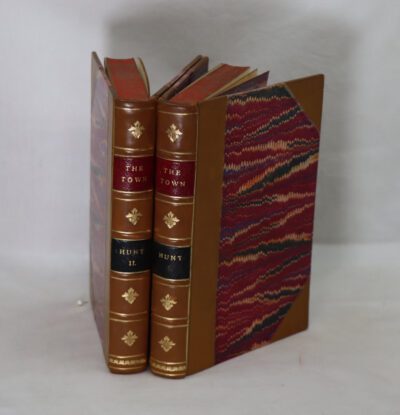The History of Sir Charles Grandison.
By Samuel Richardson
Printed: 1811
Publisher: Oliver & Boyd. Edinburgh
Edition: New edition
| Dimensions | 9 × 14 × 1 cm |
|---|---|
| Language |
Language: English
Size (cminches): 9 x 14 x 1
Condition: Very good (See explanation of ratings)
Your items
Item information
Description
Tan cloth boards with gilt title on the front board. Tan calf spine.
-
F.B.A. provides an in-depth photographic presentation of this item to stimulate your feeling and touch. More traditional book descriptions are immediately available.
This chapbook has been beautifully rebound by Mr. Brian Cole.
A rare juvenile chapbook produced in 1811 by the Edinburgh firm Oliver and Boyd. Out of Oliver and Boyd the firm of Scottish Academic Press (SAP) was born which the Frost family acquired from the Robert Maxwell estate. SAP still publishes.
The History of Sir Charles Grandison, commonly called Sir Charles Grandison, is an epistolary novel by English writer Samuel Richardson first published in February 1753. The book was a response to Henry Fielding’s The History of Tom Jones, a Foundling, which parodied the morals presented in Richardson’s previous novels. The novel follows the story of Harriet Byron who is pursued by Sir Hargrave Pollexfen. After she rejects Pollexfen, he kidnaps her, and she is only freed when Sir Charles Grandison comes to her rescue. After his appearance, the novel focuses on his history and life, and he becomes its central figure. This chapbook published by Oliver and Boyd and is a rendered down edition of the above book.
Oliver and Boyd was a British publishing and printing firm that traded from 1807 or 1808 until 1990. The firm has been described as a “stalwart in Scottish publishing”.
Building on Tweeddale Court
The grave of Thomas Oliver, Grange Cemetery
Oliver and Boyd was founded in Edinburgh by two partners: Thomas Oliver (1776–1853) and George Boyd (died 1843). The exact foundation year is not known but is believed to have been either 1807 or 1808. The firm operated from the 1820s until the 1970s at the same address in Tweeddale Court, near the Royal Mile in Edinburgh (the old “Oliver and Boyd” sign remains above the front door of the Tweeddale Court building to this day). It was one of the “auld” firms to survive in the area after the crash of 1825–26. By the 1830s the firm was not only publishing but also printing and bookbinding under the same roof at Tweeddale Court, an innovative practice for Edinburgh in that period. By 1836 the firm carried out printing there on a “massive scale”. Prior to Oliver & Boyd, printing and publishing in Scotland had been a cottage industry with the printing done on wooden presses and it was only in 1800 that the iron press had been invented. In the years 1811–1841, Oliver and Boyd issued a number of catalogues for the firm’s juvenile books & chapbooks “selling from a halfpenny upwards” and also printed and published “abridged histories in fancy covers and songbooks”. When Thomas Oliver retired and George Boyd died in 1843, the firm remained under family control with George’s nephew Thomas Jamieson Boyd being appointed as managing partner in 1843 and then acting as senior partner from 1869 to 1894. In this period the firm gained a reputation in the fields of education and medical textbook publishing and had a strong presence in the British colonial markets. When Benjamin Disraeli visited the firm in 1885 he found the firm did ‘everything but making paper’. They were printers, publishers and binders. In 1896 Oliver and Boyd was taken over by three “well-established” Edinburgh booksellers, George and James Thin and John Grant. In the 1990s after the Frosts had acquired control Dr. Douglas Grant remained as managing editor.
During the 20th century the firm maintained its reputation as “educational and general publishers of high standing”. In 1962 the firm was acquired by the Financial Times group and, later, Longmans acquired its publishing operations. In 1984, a public library known as the Scottish Poetry Library was set up in what had previously been a storage area of Oliver and Boyd’s Tweeddale Court offices. Oliver and Boyd ceased operations in 1990.
Chapbook frontispiece of Voltaire’s The Extraordinary Tragical Fate of Calas, showing Jean Calas being tortured on a breaking wheel, late 18th century
A chapbook is a small publication of up to about 40 pages, sometimes bound with a saddle stitch. In early modern Europe a chapbook was a type of printed street literature. Produced cheaply, chapbooks were small, paper-covered booklets, usually printed on a single sheet folded into books of 8, 12, 16, or 24 pages. They were often illustrated with crude woodcuts, which sometimes bore no relation to the text (much like today’s stock photos), and were often read aloud to an audience. When illustrations were included in chapbooks, they were considered popular prints.
The tradition of chapbooks arose in the 16th century, as soon as printed books became affordable, and rose to its height during the 17th and 18th centuries. Many different kinds of ephemera and popular or folk literature were published as chapbooks, such as almanacs, children’s literature, folk tales, ballads, nursery rhymes, pamphlets, poetry, and political and religious tracts.
The term “chapbook” for this type of literature was coined in the 19th century. The corresponding French term is bibliothèque bleue (blue library) because they were often wrapped in cheap blue paper that was usually reserved as a wrapping for sugar. The German term is Volksbuch (people’s book). In Spain, they were known as pliegos de cordel (cordel sheets). In Spain, they were also known as pliegos sueltos, which translates to loose sheets, because they were literally loose sheets of paper folded once or twice in order to create a booklet in quarto format. Lubok is the Russian equivalent of the chapbook.
The term “chapbook” is also in use for present-day publications, commonly short, inexpensive booklets.
Chapbooks were cheap, anonymous publications that were the usual reading material for lower-class people who could not afford books. Members of the upper classes occasionally owned chapbooks, perhaps bound in leather with a personal monogram. Printers typically tailored their texts for the popular market. Chapbooks were usually between four and twenty-four pages long, and produced on rough paper with crude, frequently recycled, woodcut illustrations. They sold in the millions.
After 1696 English chapbook peddlers had to be licensed, and 2,500 of them were then authorized, 500 in London alone. In France, there were 3,500 licensed colporteurs by 1848, and they sold 40 million books annually.
The centre of the chapbook and ballad production was London, and until the Great Fire of London (1666) the printers were based around London Bridge. However, a feature of chapbooks is the proliferation of provincial printers, especially in Scotland and Newcastle upon Tyne. The first Scottish publication was the tale of Tom Thumb, in 1682.
Condition notes
Want to know more about this item?
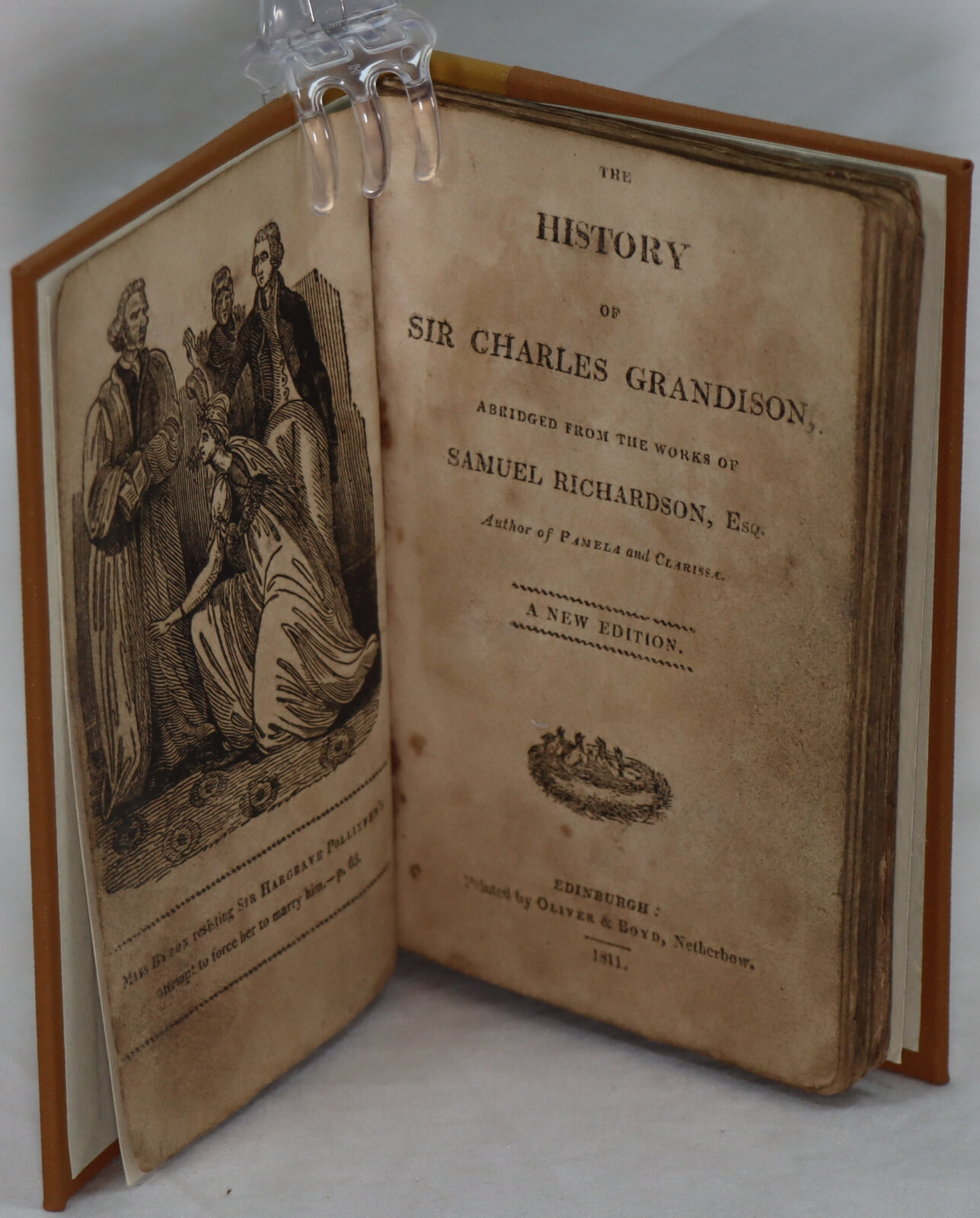
Related products
Share this Page with a friend

